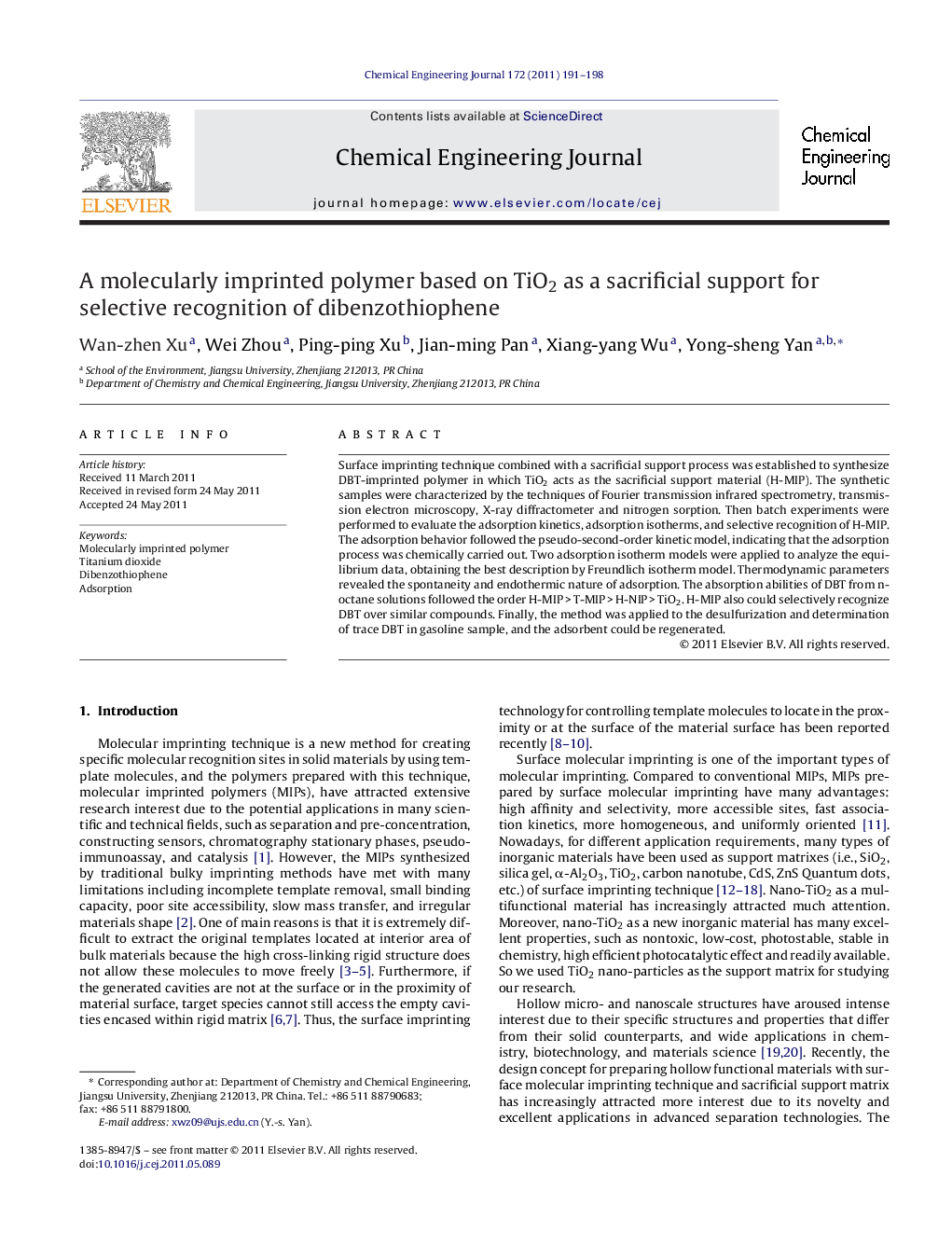| Article ID | Journal | Published Year | Pages | File Type |
|---|---|---|---|---|
| 151042 | Chemical Engineering Journal | 2011 | 8 Pages |
Surface imprinting technique combined with a sacrificial support process was established to synthesize DBT-imprinted polymer in which TiO2 acts as the sacrificial support material (H-MIP). The synthetic samples were characterized by the techniques of Fourier transmission infrared spectrometry, transmission electron microscopy, X-ray diffractometer and nitrogen sorption. Then batch experiments were performed to evaluate the adsorption kinetics, adsorption isotherms, and selective recognition of H-MIP. The adsorption behavior followed the pseudo-second-order kinetic model, indicating that the adsorption process was chemically carried out. Two adsorption isotherm models were applied to analyze the equilibrium data, obtaining the best description by Freundlich isotherm model. Thermodynamic parameters revealed the spontaneity and endothermic nature of adsorption. The absorption abilities of DBT from n-octane solutions followed the order H-MIP > T-MIP > H-NIP > TiO2. H-MIP also could selectively recognize DBT over similar compounds. Finally, the method was applied to the desulfurization and determination of trace DBT in gasoline sample, and the adsorbent could be regenerated.
► Molecular imprinted polymer (MIP) was prepared with nano-TiO2 as a sacrificial support matrix. ► The adsorption properties such as kinetics, isotherms were studied by batch adsorption experiments. ► MIP could selectively recognize DBT over similar compounds. ► MIP could be used as an effective and economical adsorbent for desulfurization of gasoline sample.
